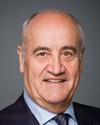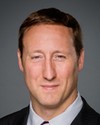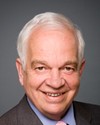Thank you.
We have a minute remaining.
Alexandre.
Evidence of meeting #3 for Government Operations and Estimates in the 41st Parliament, 1st session. (The original version is on Parliament’s site, as are the minutes.) The winning word was forces.
A recording is available from Parliament.
NDP

Alexandre Boulerice NDP Rosemont—La Petite-Patrie, QC
Minister, you confirmed that the F-35s will cost $9 billion. If my memory serves me right, that's not really in line with the assessment made by the Parliamentary Budget Officer.
My question is more specific. You said that the $9 billion was for equipment, parts and training. How much will each F-35 unit cost?
Conservative

Julian Fantino Conservative Vaughan, ON
If I may answer that, Mr. Chair, first and foremost, the $9 billion includes a whole lot more than just the actual unit, the aircraft. As Minister MacKay alluded to, it speaks to simulators, training, spare parts, and all those kinds of issues. That said, the ceiling on that project is $9 billion. That is what is allocated. We will do our utmost to work within that amount. So the actual unit price of those aircraft is....
Is it seventy...?
Dan Ross Assistant Deputy Minister (Materiel), Department of National Defence
With the latest version of the selected acquisition report from the Pentagon, it is estimated to be between $75 million and $80 million. That estimate is being very rigorously revised by the Pentagon, based on the technical baseline review they did through the second half of 2010, and we expect them to give us revised estimates late this year.
Conservative

Julian Fantino Conservative Vaughan, ON
If I may finish, I know we're talking about a huge amount of money. It was mentioned earlier that these units will not come on stream until 2016.
The other item that should be talked about in the context of this enormous purchase is obviously the absolute need. The F-18s will be finished. Everything has a life cycle. In essence, the F-18s will have outlived their usefulness. As it is, they are being extended through some very innovative and creative work done by our people. So either we are in the business of providing sovereignty for Canada and being involved in NATO and doing all those issue and going there, or Canada is going to be, once again, regressive in terms of our ability to provide a military service and to support the kinds of things we need to do.
Having said all of that, the one thing that also needs to be said here is the enormous amount of job creation and opportunities for employment for people in this country, because a lot of the units that make up this particular aircraft are manufactured, produced, or otherwise developed here in Canada. The price ultimately will depend on just how many units are manufactured. We now have various countries that are on board with huge numbers of F-35s.
I hope that sort of mitigates somewhat the thought that this is a loss leader. It's not. It has many advantages, including job creation and enhancing the economy in our country.
NDP

The Chair NDP Pat Martin
I'm afraid that's all the time we have.
I don't know what your time is like, Minister. Let me say, in case we are running out of time, though, how much we appreciate your being here. We invited three ministers to attend, and two others found themselves too busy to attend this committee to answer to their estimates. You have a very important debate going on in the House of Commons--a very timely and topical debate--and you still made time to be here. We appreciate that very much.
If you do have five more minutes, there is one more Conservative member who has questions.
Conservative

Peter MacKay Conservative Central Nova, NS
Thank you, Mr. Chair. I'd be pleased to take another question.
Conservative

Bernard Trottier Conservative Etobicoke—Lakeshore, ON
Minister MacKay and Mr. Fantino, thank you for coming in and being with the government operations and estimates committee.
Recently in the news there was some mention of the Canadian Forces planning operational hubs in various parts around the world. First, could you explain to the committee what those are, and what are the strategic and operational objectives of those hubs?
Second, and perhaps just a qualitative answer, what is the impact of those hubs on the budget and on the estimates?
Conservative

Peter MacKay Conservative Central Nova, NS
Thank you very much, Mr. Trottier.
I want to congratulate you on your position on this committee and on your election to Parliament.
There has been a lot of misunderstanding about this. Operational hubs, in essence, allow us to either pre-deploy in position or to support ongoing operations. The open secret that we had a base such as this in the United Arab Emirates is a perfect example.
During the deployment for humanitarian relief into Haiti we used Jamaica to put large aircraft, like the C-17, in place, with supplies, water, food aid, medicine, and with individuals, and then we flew a smaller but large transport plane, the C-130 Hercules, into Haiti on austere runways. It is giving us that ability to maximize proximity to a theatre of operations.
It was not accurate to report that we were in any way envisioning setting up large, permanent bases in locations throughout the world. We are simply negotiating and discussing with various countries the ability to make use of existing facilities and perhaps have a hangar or pre-deploy individuals and equipment for the purposes of increasing Canada's ability to contribute to the world, as we are doing in Libya in a place like Sigonella. We are using existing airfields in Sicily, in Italy. We've been able to maximize Canada's effect in the world. Many members of the Canadian Forces and their families will remember being in Lahr, Germany.
So we are trying to mirror the success that we've achieved in other regions of the country by simply using those forward deployment areas and negotiating that with allies. It makes perfect sense in a world of quick response and the necessity of the Canadian Forces to be able to get to these areas and contribute mightily, as they do. I'm extremely proud of the effect that those men and women have had, and we're doing everything we can to support them through equipment readiness and the diplomatic interventions that can help them achieve their missions.
Conservative

Bernard Trottier Conservative Etobicoke—Lakeshore, ON
I have a follow-up question. It's not related so much to the operational hubs; it's more for Minister Fantino and is about the national shipbuilding strategy.
Maybe you could describe some of the components of that strategy. What will be the impact on the Canadian navy? How is that going to make us a more effective defence force when it comes to defending our territory as well as taking part in missions around the world?
Conservative

Julian Fantino Conservative Vaughan, ON
Without getting too deep into this particular process that's led by Minister Ambrose, one could say that, as with the other assets, the aircraft we spoke about, so too it goes with the ships. It's a matter of having in place the ability and the resources to replace outdated equipment that no longer serves today's needs nor meets the exigencies that prevail.
The primary objective right now is to identify a procurement process that will be, as I indicated earlier, fair and transparent, but which also will ensure maximum benefit to Canadian industry wherever that's going to be. It's a cycling of equipment. These things get a lot of use. If we're going to put on these ships men and women who are willing to serve their country, we need to ensure that we provide them with the tools they need. I call them tools, but they are critical resources actually, to enable them to effectively do their job.
NDP

The Chair NDP Pat Martin
That pretty much wraps up your time, Bernard.
Again, I want to thank both ministers for a very fruitful exercise. There were good questions and very fulsome answers. We appreciate that very much, Minister MacKay and Minister Fantino.
I'm going to suspend the meeting for a minute or two while the ministers take their leave. Then we will continue with the departmental officials for the rest of our two-hour meeting.
NDP

The Chair NDP Pat Martin
I will call the meeting back to order.
The government operations committee meeting will continue with the questioning of departmental officials. In continuing the round we had going, the first questioner would be from the Liberal Party, John McCallum.
John, it's your turn to question if you would like.
Liberal

John McCallum Liberal Markham—Unionville, ON
Okay.
Perhaps what I'd like to do is go back to this question of the lapsed money, because I would say that although the minister said I was wrong, I think I was right in terms of how I was looking at it.
I just had a discussion with Mr. Lindsey, and I think Mr. Lindsey and I agree that for 2009-10, the lapse was $1.2 billion in the following sense. The department proposed to spend a certain amount. They thought they'd spend a certain amount. At the end of the year, it turned out they'd spent $1.2 billion less than what they thought they'd spend. I have heard that the number is even bigger for the following year, for 2010-11. It could be that up to 10% of the budget of the Department of National Defence isn't spent.
Now, he will explain about reprofiling, but I just want to put it in these terms first. My concern would be that the Department of National Defence has some enemies in town, like the Department of Finance; if they see that National Defence is spending only 90% of the money it has, why not just take that money away?
If your lapse is $2 billion, that's half of the amount the government has to save in total across the government--$4 billion a year. I'm not saying that's necessarily reasonable, but I'm saying that it could be interpreted that way.
I guess I'm asking Mr. Fonberg, Mr. Lindsey, or anyone who wants to answer for an explanation.
Assistant Deputy Minister, Finance and Corporate Services, Department of National Defence
Thank you.
There are two parts, I guess, to respond to Mr. McCallum, the first technical. In any given year, the department is appropriated money through main estimates and supplementary estimates. It spends money and gives a rendering of those accounts in the public accounts. However, through the course of the year, the department's authority to spend money that has been appropriated can be fettered or reduced by the executive.
In fact, in 2009-10 and in virtually every fiscal year, that winds up happening. It winds up happening usually because deliveries of equipment, or infrastructure that we had planned to build, will get delayed for whatever reason. So the money that we require to pay for the infrastructure when it ultimately is built, or to pay for the equipment when it ultimately is delivered, gets transferred from, in the year we're talking about, fiscal year 2009-10 to some other fiscal year in the future. Our spending authority for the year in question is actually reduced. That becomes the benchmark against which we compare, and in fact all other departments compare because they all have the same phenomenon to some extent or another, our actual expenditures.
With respect to 2009-10, after allowing for that amount of money that is reprofiled to the future to pay for future obligations, the amount of money that DND did not spend, or the amount of money, to put it euphemistically, “left on the table”, was $123 million. In fact, in the preceding five years, the total amount of money that fits into that category, that DND left on the table or did not spend, was less than $500 million for the entire five years.
NDP

The Chair NDP Pat Martin
That's interesting.
Can I ask a question as the chair?
I won't take this from your time, John.
We've learned you're allowed to carry over or roll over up to 5% from year to year, or 20% of...?
I'm being corrected here.
Robert Fonberg Deputy Minister, Department of National Defence
Mr. Chairman, we are allowed to carry 2.5% forward. Other departments are allowed to carry 5% forward.
Assistant Deputy Minister, Finance and Corporate Services, Department of National Defence
[Inaudible--Editor]...on capital.